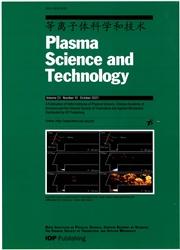利用激光诱导击穿光谱与机器学习算法相结合估算微晶粒材料的晶粒尺寸
IF 1.6
3区 物理与天体物理
Q3 PHYSICS, FLUIDS & PLASMAS
引用次数: 0
摘要
最近的工作验证了一种利用激光诱导击穿光谱(LIBS)估算微晶粒材料晶粒大小的新方法,其范围在数十微米到数百微米之间。在这种情况下,需要进行单变量分析,并构建一个片断模型,以便在如此宽的范围内估算晶粒尺寸。这是因为在所研究的粒度范围内,等离子体形成环境(即发光等离子体的状态,因此需要测量的 LIBS 信号)与粒度之间存在复杂的依赖关系。在本研究中,我们初步构建了一个统一的校准模型,适用于基于 LIBS 对这些粒度的估算。具体地说,我们基于反向传播神经网络(BPNN)算法,采用有物理先验知识和无物理先验知识的特征选择策略,分别构建了两个统一的多元定标模型。通过对两个多元模型的性能进行详细分析,发现基于 BPNN 算法可以成功构建一个统一的校准模型,用于估算数十至数百微米范围内的粒度。研究还发现,采用物理引导的特征选择策略构建的这一模型具有更好的预测性能。这项研究对于开发利用 LIBS 进行材料分析的技术具有实际意义,尤其是在 LIBS 信号与待估算的材料参数呈现复杂依赖关系的情况下。本文章由计算机程序翻译,如有差异,请以英文原文为准。
Estimating grain size of microgranular material using laser-induced breakdown spectroscopy combined with machine learning algorithms
Recent work validated a new method for estimating grain size of microgranular materials in the range of tens-to-hundreds micrometers using laser-induced breakdown spectroscopy (LIBS). In that situation, univariate analysis was performed and a piecewise model has to be constructed for achieving the estimation of the grain size within such a wide range. This is due to the fact that a complex dependence of plasma formation environment (i.e., the status of luminous plasma and therefore LIBS signal to be measured) on grain size occurs in the size range studied there. In the present work, we tentatively construct a unified calibration model suitable for LIBS-based estimation of those grain sizes. Specifically, two unified multivariate calibration models are constructed based on back-propagation neural network (BPNN) algorithms using the feature selection strategies with and without considering physical prior knowledge, respectively. By detailed analysis of the performances of the two multivariate models, it was found that, a unified calibration model can be constructed successfully based on BPNN algorithms for estimating the grain size in the range of tens-to-hundreds micrometers. It was also found that this model constructed with a physics-guided feature selection strategy has better prediction performances. This study has practical significance in developing the technology for material analysis using LIBS, especially in the case that LIBS signal exhibits a complex dependence on the material parameter to be estimated.
求助全文
通过发布文献求助,成功后即可免费获取论文全文。
去求助
来源期刊

Plasma Science & Technology
物理-物理:流体与等离子体
CiteScore
3.10
自引率
11.80%
发文量
3773
审稿时长
3.8 months
期刊介绍:
PST assists in advancing plasma science and technology by reporting important, novel, helpful and thought-provoking progress in this strongly multidisciplinary and interdisciplinary field, in a timely manner.
A Publication of the Institute of Plasma Physics, Chinese Academy of Sciences and the Chinese Society of Theoretical and Applied Mechanics.
 求助内容:
求助内容: 应助结果提醒方式:
应助结果提醒方式:


